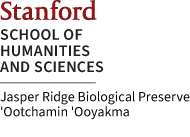Farner JE, ER Spear, EA Mordecai (2020) Habitat type and interannual variation shape unique fungal pathogen communities on a California native bunchgrass. Fungal Ecology 48 Habitat type and interannual variation shape unique fungal pathogen communities on a California native bunchgrass. Fungal Ecology 48
The role of infectious disease in regulating host populations is increasingly recognized, but how environmental conditions affect pathogen communities and infection levels remains poorly understood. Over 3 y, we compared foliar disease burden, fungal pathogen community composition, and foliar chemistry in the perennial bunchgrass Stipa pulchra occurring in adjacent serpentine and nonserpentine grassland habitats with distinct soil types and plant communities. We found that serpentine and nonserpentine S. pulchra experienced consistent, low disease pressure associated with distinct fungal pathogen communities with high interannual species turnover. Additionally, plant chemistry differed with habitat type. The results indicate that this species experiences minimal foliar disease associated with diverse fungal communities that are structured across landscapes by spatially and temporally variable conditions. Distinct fungal communities associated with different growing conditions may shield S. pulchra from large disease outbreaks, contributing to the low disease burden observed on this and other Mediterranean grassland species. [link to publication]



